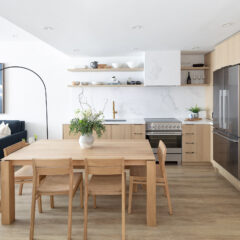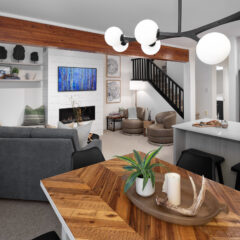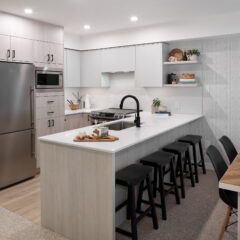Ceramic tile patterns
Are you a homeowner with a keen eye for aesthetics and a desire to revitalize your living space? If you’ve found yourself in search of a comprehensive guide on ceramic tile patterns, look no further. Welcome to a world of boundless creativity and transformative possibilities for your home.
Whether you’re considering a full renovation or simply want to breathe new life into a particular room, understanding ceramic tile patterns is the key to unlocking the potential of your space. So, if you’re ready to delve into the captivating realm of ceramic tile designs, you’ve come to the right place. Let’s embark on this journey together, where inspiration meets functionality and dreams take shape.
Types of Ceramic Tile Patterns
Diagonal Floor Tile: When it comes to adding visual interest and a touch of elegance to your floors, diagonal floor tile patterns are a fantastic choice. By installing ceramic tiles diagonally, you can create a sense of spaciousness and depth in the room. The diagonal layout adds a dynamic element to your flooring, making it visually appealing and unique. Whether you’re renovating your kitchen, bathroom, or any other space, consider the timeless charm of diagonal floor tile patterns.
Octagonal with Dots: If you’re a fan of classic designs with a touch of vintage allure, octagonal tiles with dots are a perfect option for your home renovation project. This pattern features octagonal-shaped ceramic tiles, often in white or neutral tones, with smaller contrasting dots at the center of each tile. Octagonal tiles with dots can create a stunning focal point in any room, especially in bathrooms or entryways. Their nostalgic charm adds character and sophistication to your space, evoking a sense of timeless beauty.
Basketweave: For a truly captivating ceramic tile pattern, look no further than the basketweave design. Inspired by the intricate weaving patterns of baskets, this style showcases rectangular tiles interwoven to form a visually stunning layout. The alternating tiles create a sense of movement and texture, adding a touch of craftsmanship and artistry to your floors or walls. The basketweave pattern is versatile and can complement various design styles, from traditional to contemporary, making it a popular choice among homeowners.
Windmill: If you’re seeking a ceramic tile pattern that exudes a sense of playfulness and energy, the windmill design is a delightful choice. This pattern features a combination of rectangular and square tiles arranged in a way that resembles the rotating blades of a windmill. The repeating geometric shapes create a visually dynamic and eye-catching pattern that adds a sense of movement and vitality to any space. Consider incorporating the windmill pattern into your kitchen backsplash or bathroom walls for a touch of whimsy and charm.
Pinwheel: The pinwheel ceramic tile pattern is a versatile and visually striking option that can breathe new life into your floors or walls. This pattern involves placing a square tile with a smaller contrasting square tile at each corner, forming a pinwheel-like design. The alternating colors or textures of the tiles create a captivating visual effect that instantly draws attention. Pinwheel patterns can be used to create a focal point in any room or to add a touch of personality to a larger tiled area.
Checkerboard: For a timeless and classic ceramic tile pattern, the checkerboard design remains a popular choice. This pattern features a simple alternating layout of square tiles in contrasting colors, reminiscent of a traditional chess or checkers board. The checkerboard pattern adds a touch of sophistication and elegance to any space, making it suitable for both contemporary and traditional interior styles. Consider using this pattern on floors, walls, or even as a decorative accent in smaller areas for a visually stunning effect.
Running Bond: The running bond pattern is a widely used and versatile ceramic tile layout that can add a sense of continuity and movement to your floors or walls. This pattern involves installing rectangular tiles in a staggered formation, with each tile’s long side overlapping the adjacent tile’s short side. The result is a visually appealing pattern that creates a sense of flow and direction. The running bond pattern is commonly used in various areas of the home, including kitchens, bathrooms, and hallways, offering both aesthetic appeal and structural strength.
Zig-Zag: For a modern and bold ceramic tile pattern, the zig-zag design is an excellent choice. This pattern, also known as chevron, features a series of tiles arranged in a continuous zig-zag pattern. The angular lines create a visually dynamic and captivating effect, adding a sense of movement and energy to your space. Zig-zag patterns can be used to create focal points on floors, walls, or even as decorative accents in smaller areas. Their contemporary appeal makes them a popular choice for those seeking a stylish and unique tile pattern.

Choosing the Right Ceramic Tile Pattern
Factors to Consider:
When it comes to selecting the perfect ceramic tile pattern for your home, there are several factors to consider. By taking these factors into account, you can ensure that the chosen pattern not only enhances the aesthetic appeal of your space but also suits its specific requirements. Let’s explore the key factors to consider when choosing a ceramic tile pattern.
- Matching the Pattern with Room Size and Decor: The size of the room and its existing decor play a significant role in determining the ideal ceramic tile pattern. For smaller spaces, intricate patterns with many details may appear overwhelming, while larger patterns can create a sense of grandeur and openness. Consider the scale of the room and select a pattern that complements its size. Additionally, take into account the existing decor and color scheme to ensure the pattern harmonizes with the overall design aesthetic.
Ceramic Tile Patterns by Location
Now, let’s delve into specific ceramic tile patterns suitable for different areas of your home, such as the kitchen, bathroom, and outdoor spaces.
Kitchen: The kitchen is a high-traffic area that requires durable and easy-to-clean ceramic tile patterns. Consider options like diagonal floor tiles or the classic checkerboard pattern for a timeless look. These patterns can handle the wear and tear of daily cooking activities while adding visual interest to the space. Additionally, larger kitchen areas can benefit from patterns like windmill or pinwheel designs, which create a sense of energy and movement.
Bathroom: When it comes to bathroom tile patterns, it’s essential to prioritize functionality and moisture resistance. Octagonal tiles with dots offer a charming vintage aesthetic that works well in both small and large bathrooms. For a spa-like atmosphere, consider a basketweave pattern that adds texture and elegance to the space. Running bond patterns are also popular in bathrooms, providing a sleek and modern look.
Outdoor: When selecting ceramic tile patterns for outdoor spaces, durability and slip resistance are crucial. Opt for patterns that can withstand exposure to the elements and provide a safe surface. A popular choice for outdoor areas is the running bond pattern, as it offers excellent traction and can withstand heavy foot traffic. Additionally, consider natural stone-inspired patterns for a seamless blend with outdoor surroundings.
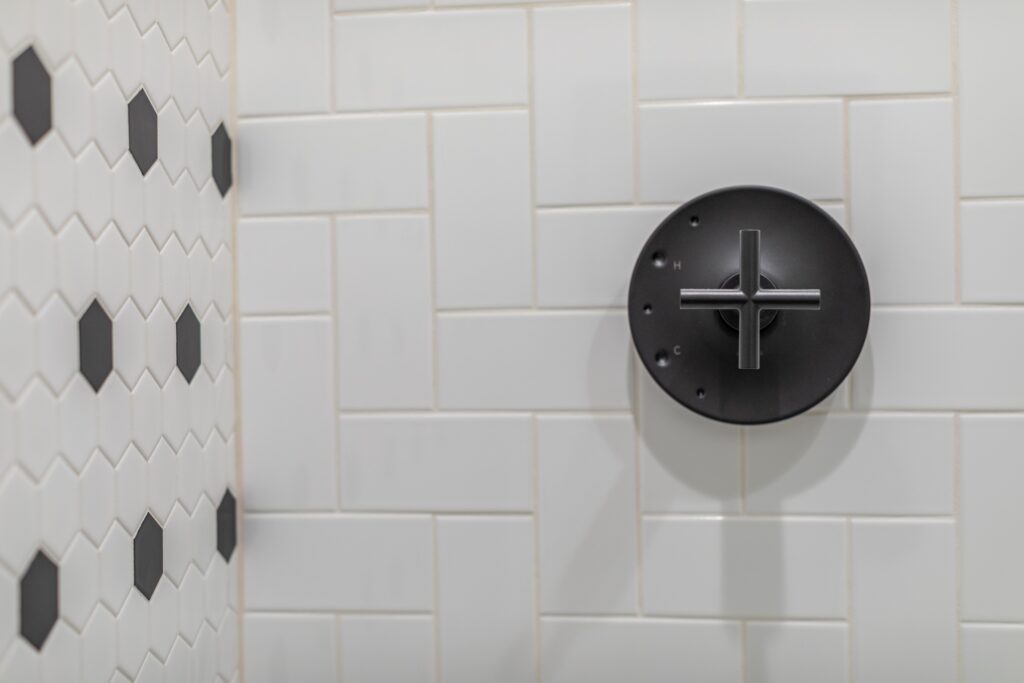
Ceramic Tile Patterns by Shape
When it comes to ceramic tile patterns, the shape of the tiles can have a significant impact on the overall aesthetic of a space. Let’s explore popular ceramic tile patterns based on their shape.
Square: Square ceramic tiles are a timeless and versatile choice for various applications. They offer a clean and uniform look that can complement both modern and traditional design styles. Square tiles can be installed in a simple grid pattern for a clean and minimalist appearance, or they can be arranged in more intricate patterns like a checkerboard or pinwheel layout to add visual interest and depth to a room.
Rectangle: Rectangle-shaped ceramic tiles provide a more elongated and elegant look. They can create a sense of movement and elongate a space when installed in a running bond pattern. This pattern involves placing the long side of the tile parallel to the wall and offsetting each row by half the tile’s length. Rectangle tiles can also be arranged in herringbone or brick patterns for a classic and sophisticated touch.
Hexagon: Hexagonal ceramic tiles offer a unique and captivating visual appeal. Their six-sided shape adds a geometric charm to any space. Hexagon tiles can be installed in a standard grid pattern for a modern and sleek look, or they can be arranged in a honeycomb pattern for a more intricate and eye-catching design. Hexagonal patterns are particularly popular for bathroom floors and backsplashes, adding a touch of personality and creativity to the space.
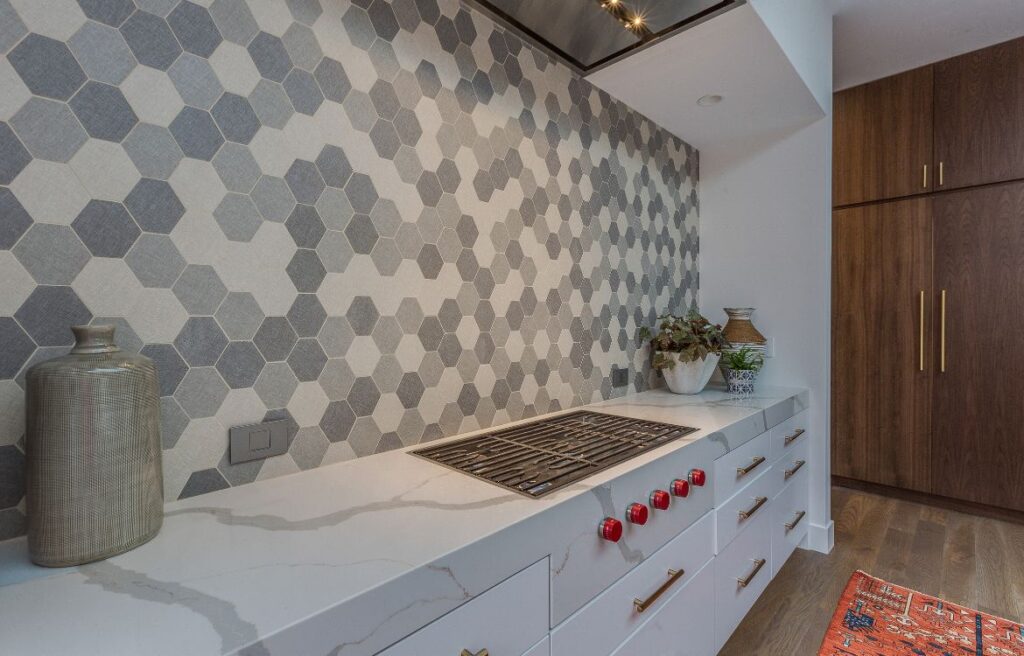
Ceramic Tile Patterns by Material
The material and finish of ceramic tiles can significantly impact their appearance and performance. Let’s explore popular ceramic tile patterns based on their material characteristics.
Matte: Matte ceramic tiles have a non-reflective and textured surface. They offer a more subdued and contemporary look, perfect for spaces that require a soft and understated aesthetic. Matte tiles are less prone to showing smudges and fingerprints, making them ideal for high-traffic areas like kitchens and bathrooms.
Glossy: Glossy ceramic tiles have a shiny and reflective surface that adds a touch of glamour and elegance to any space. They create a sense of depth and brightness, making rooms appear more spacious. Glossy tiles are commonly used in kitchens and bathrooms, as they are easy to clean and maintain their lustrous appearance over time.
Glazed: Glazed ceramic tiles have a protective layer of liquid glass applied to the surface. This layer adds durability, stain resistance, and vibrant color options to the tiles. Glazed tiles can be found in various patterns and finishes, making them suitable for both indoor and outdoor applications.
Unglazed: Unglazed ceramic tiles do not have a protective layer, resulting in a more natural and earthy appearance. They are typically denser and more slip-resistant than glazed tiles, making them ideal for high-traffic areas and outdoor spaces. Unglazed tiles can be left in their natural state or treated with sealants for added protection.
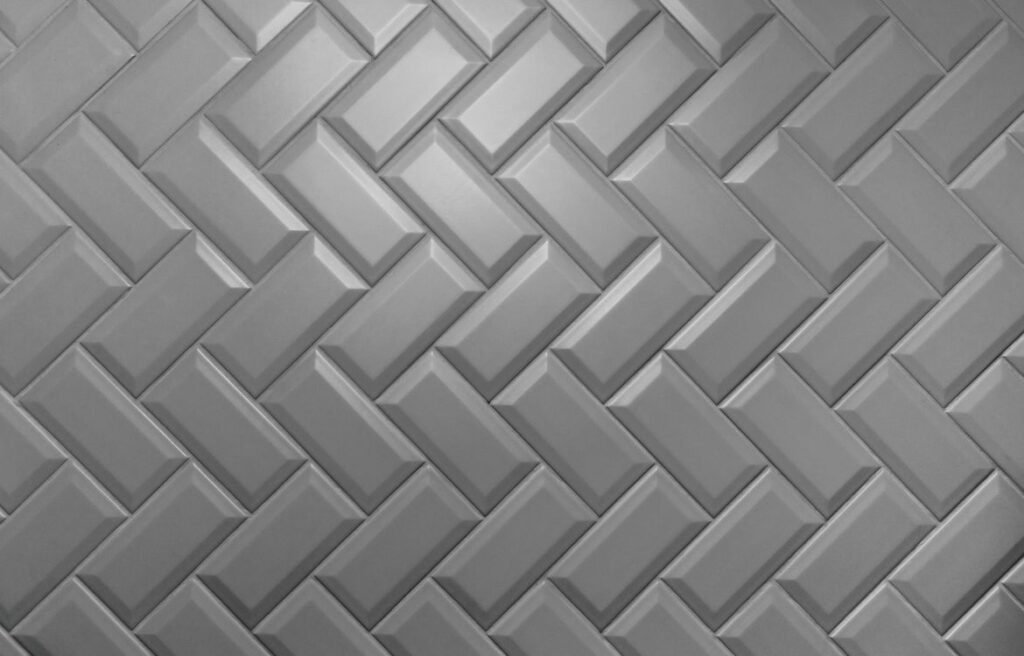
Popular Ceramic Tile Pattern Styles
When it comes to ceramic tile patterns, various styles can help you achieve a specific look and ambiance in your home. Let’s explore some popular ceramic tile pattern styles that can transform your space.
Modern: For those who appreciate sleek lines, minimalist designs, and a contemporary aesthetic, modern ceramic tile patterns are an excellent choice. Modern styles often feature clean, geometric shapes such as squares, rectangles, or hexagons arranged in a simple grid or offset pattern. These patterns create a sense of simplicity, sophistication, and visual harmony, making them ideal for modern kitchens, bathrooms, or living areas.
Vintage: If you’re drawn to nostalgia and timeless elegance, vintage ceramic tile patterns can infuse your space with character and charm. Vintage styles often include intricate patterns like octagonal tiles with dots, basketweave designs, or encaustic cement tiles. These patterns evoke a sense of history and craftsmanship, allowing you to create a space reminiscent of a bygone era. Vintage ceramic tile patterns are perfect for adding a touch of elegance to bathrooms, entryways, or any area where you want to capture the allure of the past.
Farmhouse/Rustic: Farmhouse and rustic styles embrace the warmth, simplicity, and natural beauty of rural living. In these styles, ceramic tile patterns often feature earthy tones, textured surfaces, and worn or distressed finishes. Common patterns include subway tiles, wood-look tiles, or stone-look tiles arranged in a traditional brick pattern or herringbone layout. These patterns can help create a cozy, inviting atmosphere in kitchens, bathrooms, or living spaces, reflecting the charm of farmhouse or rustic aesthetics.
Traditional: For those who appreciate classic elegance and timeless appeal, traditional ceramic tile patterns are an excellent choice. These patterns often draw inspiration from historical influences and feature intricate designs like mosaics, arabesques, or damask motifs. Traditional patterns can be found in a variety of shapes and arrangements, allowing you to create a luxurious and sophisticated ambiance in your home. Traditional ceramic tile patterns are well-suited for bathrooms, entryways, or areas where you want to exude a sense of grandeur and refinement.
Classic: Classic ceramic tile patterns are versatile and enduring, offering a blend of elegance and versatility. These patterns often include checkerboard layouts, diagonal arrangements, or simple grid patterns using square or rectangular tiles. Classic styles provide a timeless backdrop that can complement various interior design aesthetics, whether contemporary or traditional. They are suitable for various areas of the home, including kitchens, bathrooms, or living spaces, providing a sense of understated beauty and enduring appeal.
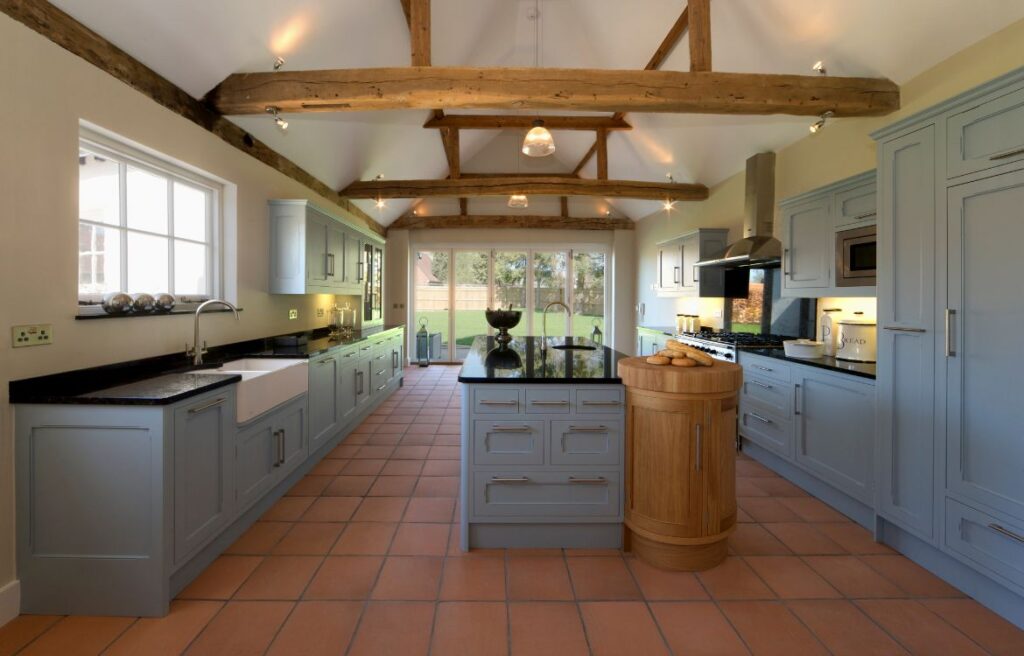
How to Lay a Ceramic Tile Pattern: A Step-by-Step Guide
Laying a ceramic tile pattern requires careful planning, attention to detail, and precise execution. Follow this step-by-step guide to ensure a successful tile installation.
- Prepare the Surface Ensure that the surface where the tiles will be installed is clean, level, and free from any debris. Remove any existing flooring and repair any cracks or uneven areas. If necessary, apply a suitable underlayment or primer to create a smooth and stable surface for tile installation.
- Measure and Plan Measure the area where you will be installing the tiles and calculate the number of tiles needed. Consider the layout and pattern you want to achieve, taking into account any focal points or areas that may require special attention. Use a chalk line or laser level to create guidelines for precise tile placement.
- Mix the Mortar or Adhesive Follow the manufacturer’s instructions to mix the mortar or adhesive. Use a trowel to achieve the desired consistency. Avoid mixing more adhesive than you can use within the recommended working time to prevent it from drying out.
- Start Laying the Tiles Begin by applying a layer of mortar or adhesive to a small section of the floor or wall using the notched side of the trowel. Start in one corner and work your way outward, ensuring consistent coverage. Place the first tile in position, pressing it firmly into the mortar or adhesive. Use spacers to maintain even spacing between tiles.
- Continue with the Pattern Continue laying the tiles according to the chosen pattern, working in small sections at a time. Apply mortar or adhesive to the surface, combing it with the notched side of the trowel, and place the tiles in position. Ensure that each tile is level and aligned with the guidelines. Adjust the spacers as needed.
- Cut Tiles to Fit As you reach the edges or corners of the installation area, you may need to cut tiles to fit. Use a tile cutter or wet saw to make precise cuts. Take accurate measurements and mark the tiles before cutting. Remember to wear appropriate safety gear when operating cutting tools.
- Allow for Proper Setting Time Once all the tiles are laid, allow the mortar or adhesive to set as per the manufacturer’s instructions. Avoid walking on the tiles or applying any pressure until they are fully set to prevent displacement.
- Grout the Tiles After the tiles are set, it’s time to apply grout. Mix the grout according to the manufacturer’s instructions and apply it to the tile joints using a grout float. Work the grout into the joints, removing any excess. Allow the grout to cure for the recommended time and then clean the tiles with a damp sponge to remove any grout haze.
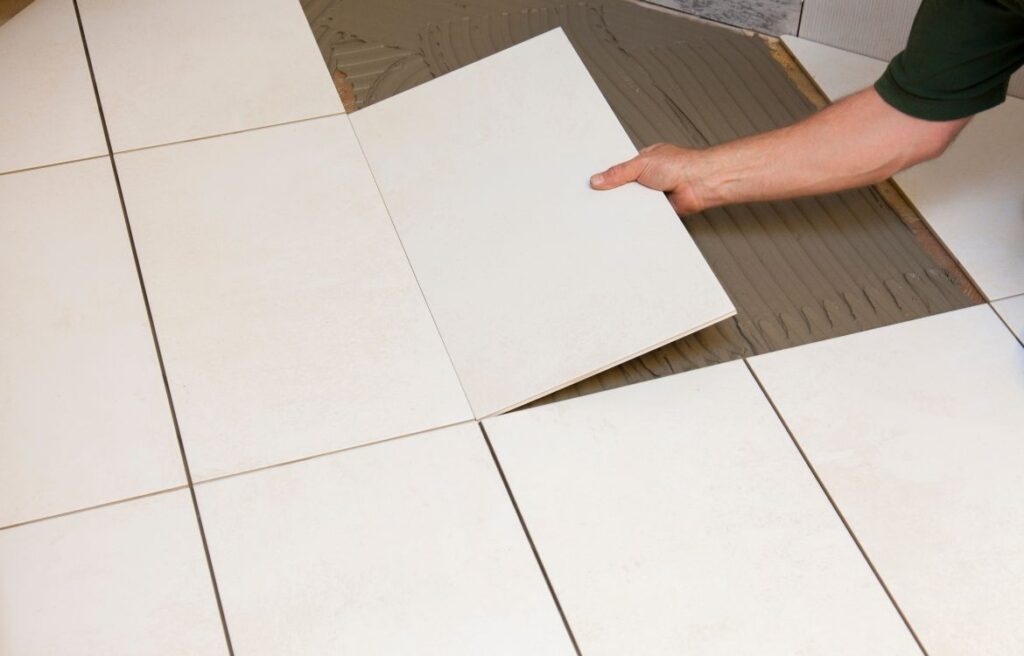
Common Mistakes to Avoid
- Insufficient surface preparation: Failing to properly clean, level, or prime the surface can lead to tile installation problems and compromises the longevity of the project.
- Inaccurate measurements: Measure the installation area carefully and calculate the number of tiles needed to avoid running out or having an excess of tiles.
- Inconsistent mortar or adhesive application: Ensure consistent coverage and proper combing of mortar or adhesive to ensure a strong bond between the tiles and the surface.
- Poor tile alignment and leveling: Take the time to align each tile properly and use a level to ensure they are even. Crooked or uneven tiles can affect the overall appearance of the pattern.
- Neglecting to allow for proper setting and curing time: Rushing the process can lead to tile displacement or grout failure. Follow the manufacturer’s recommended setting and curing times before subjecting the tiles to foot traffic or additional stress.
FAQ
Are patterned tiles still in style?
Yes, patterned tiles are still in style. They can add visual interest, personality, and a unique touch to any space. Whether it’s a bold geometric pattern or a subtle design, patterned tiles can create a stunning focal point in a room, such as in kitchens, bathrooms, or entryways.
What is the most common tile layout?
The most common tile layout is the straight or grid pattern. In this layout, tiles are installed in a simple grid pattern, with each tile aligned with the one next to it. This layout is popular because it is easy to install, versatile, and works well with both square and rectangular tiles.
What is the easiest tile pattern?
The easiest tile pattern is the straight or grid pattern. It requires minimal cutting and is relatively simple to install. With this pattern, tiles are laid in straight rows or columns, creating a clean and uniform look. It is a great choice for beginners or those looking for a straightforward and efficient installation process.
Which tile pattern has least waste?
The herringbone tile pattern is known for having the least waste. In this pattern, rectangular tiles are laid at a 45-degree angle to create a V-shaped or zigzag pattern. The tiles can be cut and positioned in a way that minimizes waste and optimizes the use of material. This makes it an efficient pattern, especially when using larger tiles.
Why is 50% tile pattern not recommended?
The 50% tile pattern, also known as the running bond or brick pattern, is not recommended for large-format tiles or areas with high foot traffic. This pattern involves offsetting each row of tiles by 50% of the tile’s length. However, with large tiles, this offset can create lippage or uneven surfaces, and with heavy foot traffic, it can accentuate any slight variations in tile height, potentially causing tripping hazards.
What tile will never go out of style?
Classic subway tiles are a timeless option that will never go out of style. These rectangular tiles, typically in a size of 3×6 inches, are known for their clean and versatile aesthetic. They can be used in various settings, from traditional to modern, and are often seen in kitchens, bathrooms, and other areas where a timeless and elegant look is desired.
Conclusion
Thank you for joining us on this enlightening exploration of ceramic tile patterns. We hope that the knowledge you’ve gained here has empowered you to envision the endless possibilities that lie within your home. Fresh Home Renovations is dedicated to helping homeowners like you transform their living spaces into true havens of style and comfort.
If you’re eager to embark on your own renovation journey or if you have any questions, don’t hesitate to reach out to us. Our team of experts is always here to assist you, offering personalized guidance and innovative solutions tailored to your unique vision. Your dream space awaits, so take the first step and contact Fresh Home Renovations today. Together, we can bring your vision to life.



